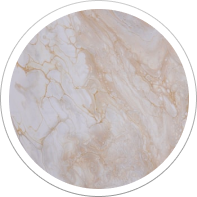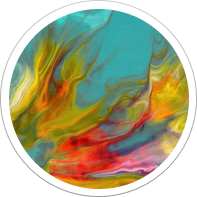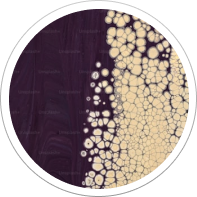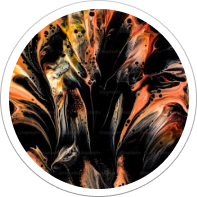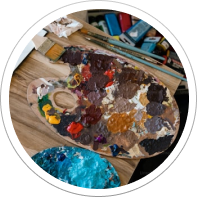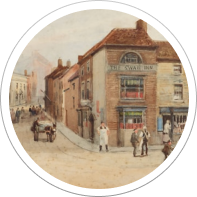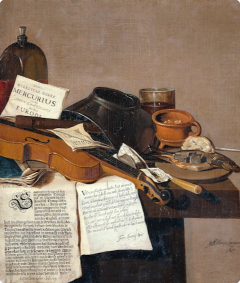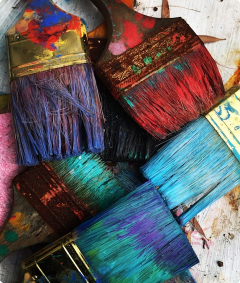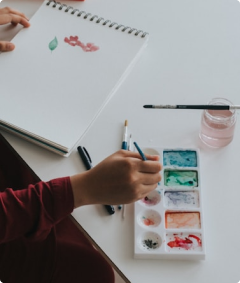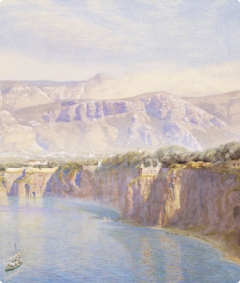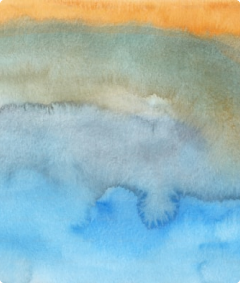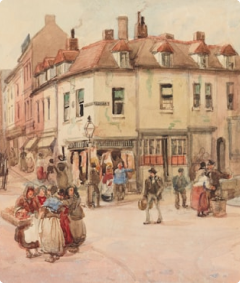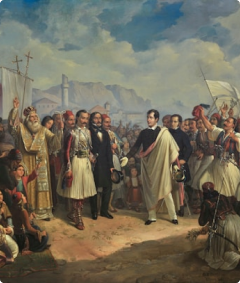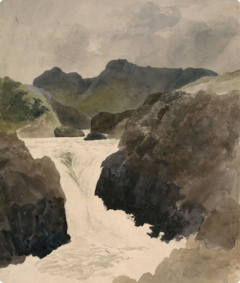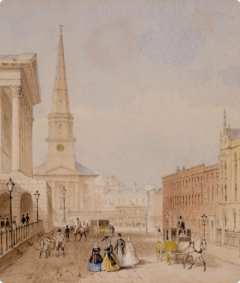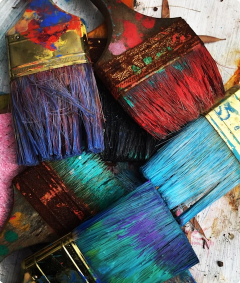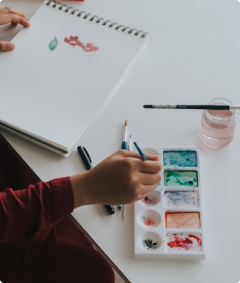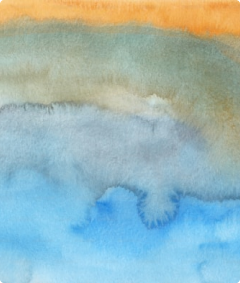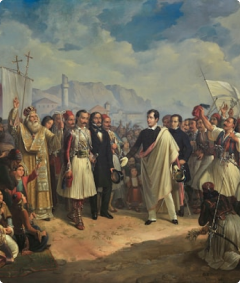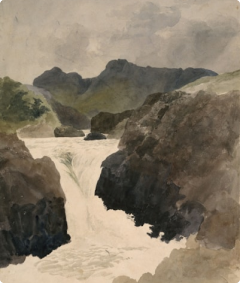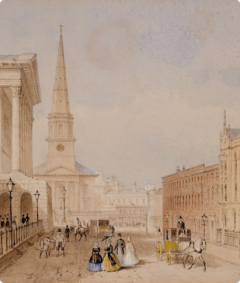
Top Seller
Canvas Prints & Photo Tiles, Wall Art from Jodello
Transform your space with Jodello’s canvas prints, photo tiles, and custom wall art. Turn memories and designs into stunning decor that reflects your unique style.
Get Started
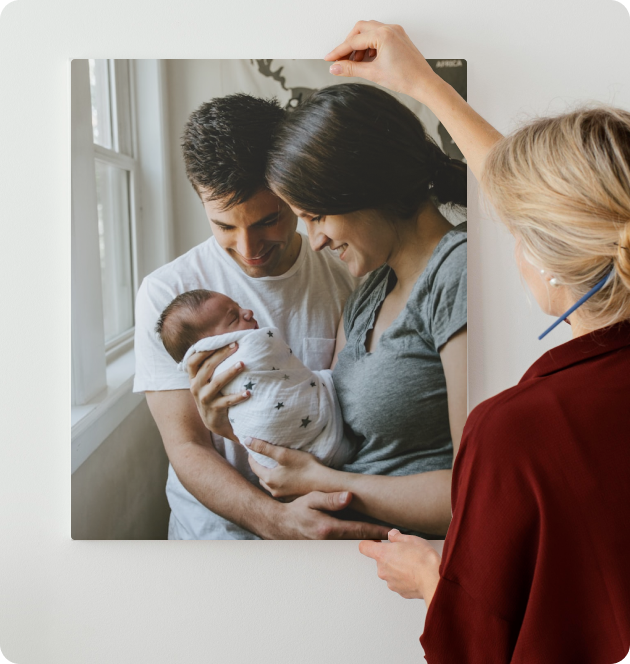






How It Works:
Transform your space with Jodello’s canvas prints, photo tiles, and custom wall art.

1. Add Photos
Upload your favorite moments.

2. We Deliver
Get your custom prints fast.

3. You Stick
Peel, stick, and transform your walls effortlessly.

Featured Categories
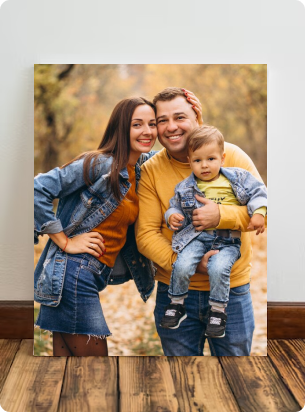
Your Cherished Moments, Beautifully Displayed
Transform your space with top-quality, customizable canvas prints. From cherished moments to stunning artwork, Jodello offers a seamless way to craft beautiful pieces that showcase your unique taste.
Get Started
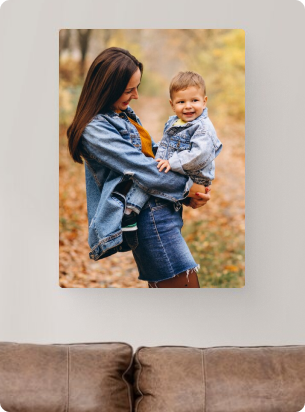
Why You'll Love Jodello

Seamless Installation
Easy-to-mount prints, no tools needed

No Damage, No Hassle
Sticks securely, removes cleanly

Endlessly Customizable
Designs that fit your style effortlessly
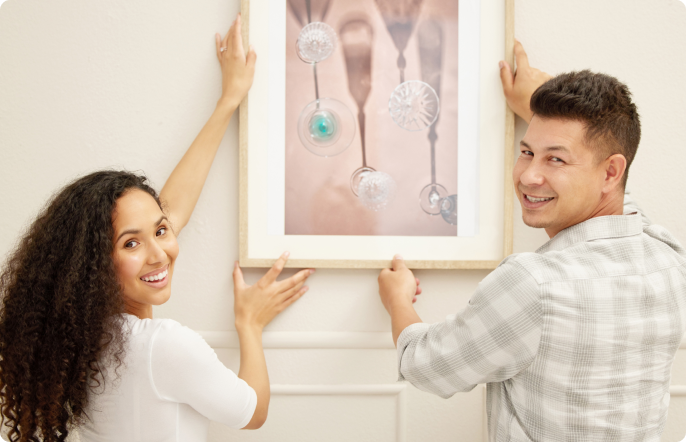
Customer Testimonials
Discover the conversations happening around our brand and see what our customers are saying about their experiences with us.
"I recently purchased a stunning canvas from Jodello, and I couldn't be happier with my choice! The vibrant colors and exquisite detail have truly transformed my living room. “


Liam Carter
"I recently purchased a stunning canvas from Jodello, and I couldn't be happier with my choice! The vibrant colors and exquisite detail have truly transformed my living room. “


Liam Carter
"I recently purchased a stunning canvas from Jodello, and I couldn't be happier with my choice! The vibrant colors and exquisite detail have truly transformed my living room. “


Liam Carter
FAQs
Easy-to-mount prints, no tools needed
Easy-to-mount prints, no tools needed
Easy-to-mount prints, no tools needed
Easy-to-mount prints, no tools needed
Easy-to-mount prints, no tools needed
Easy-to-mount prints, no tools needed
Easy-to-mount prints, no tools needed
Easy-to-mount prints, no tools needed
Home Décor with Handcrafted Wall Picture Tiles
Creating personalized home decorations has never been more accessible or affordable than with this revolutionary picture tile method. This comprehensive guide will walk you through every aspect of transforming ordinary ceramic tiles into stunning photographic displays that rival expensive gallery pieces. Gone are the days of settling for mass-produced frames that lack personality and character.
The beauty of this craft lies in its simplicity and versatility. Using materials readily available at any hardware store, you can create unique decorative pieces that showcase your most cherished memories while adding texture and visual interest to any space. Each tile becomes a canvas for your creativity, allowing you to experiment with different sizes, arrangements, and photographic subjects.
Essential Materials and Tool Selection
The foundation of successful picture tiles begins with selecting the right materials. Hardware stores offer an impressive variety of ceramic tiles, each with distinct characteristics that will influence your final product. Stone tiles provide exceptional texture and depth, creating an almost canvas-like appearance that enhances the artistic quality of your photographs. Smooth ceramic tiles offer a more polished, contemporary look that works beautifully in modern spaces.
When choosing tiles, consider the thickness and weight, especially if you plan to use adhesive mounting methods. Thinner tiles are lighter and easier to mount, while thicker tiles provide more substantial presence on the wall. The surface texture plays a crucial role in the final appearance - rougher textures create more artistic, painterly effects, while smoother surfaces maintain crisp photographic detail.
Pricing varies significantly between retailers, so shopping around can yield substantial savings. The most economical options often cost mere cents per tile, making this an incredibly budget-friendly decorating solution. Consider purchasing extra tiles to account for practice attempts and potential mistakes during your first few projects.
The adhesive component requires careful consideration. Traditional decoupage mediums provide the strongest bond and clearest finish, though they may contain synthetic compounds. The medium serves dual purposes: securing the photograph to the tile surface and providing a protective topcoat that prevents damage from moisture, dust, and handling.
Your photographic prints require specific attention to paper quality and ink type. Standard printer paper creates a delightfully rustic, vintage appearance that many find more appealing than glossy photo paper. The slightly absorbent nature of regular paper allows the adhesive to penetrate more effectively, creating a stronger bond. However, photo paper works equally well if you prefer sharper, more vibrant colors.
Photographic Preparation and Digital Processing
The success of your picture tiles largely depends on thoughtful photograph selection and proper digital preparation. Not every photograph translates well to square format, so careful consideration of composition becomes essential. Portraits often work beautifully when cropped to focus on facial features, while landscapes may require strategic cropping to maintain visual impact within the square constraint.
Digital photo editing software, whether simple or sophisticated, becomes your primary tool for preparation. The cropping process requires attention to visual balance and focal points. Consider the rule of thirds when deciding which portion of your original photograph to feature. Sometimes the most interesting square crop isn't the obvious center portion - experiment with off-center compositions that create dynamic visual tension.
Color correction and contrast adjustments can dramatically improve the final appearance of your tiles. Since the decoupage process may slightly mute colors, enhancing saturation and contrast in your digital file compensates for this effect. Pay particular attention to shadow and highlight details, as these define the dimensional quality of your finished piece.
Resolution considerations become important for larger tiles. While smaller tiles can accommodate lower resolution images, larger formats benefit from higher resolution files to maintain sharpness and detail. However, standard digital camera resolution proves more than adequate for most tile sizes commonly used in this craft.
Consider creating themed collections by processing multiple photographs with consistent color grading or filter effects. This approach creates cohesive gallery walls where individual tiles work harmoniously together while maintaining their individual character.
Precise Measurement and Sizing Strategies
Accurate measurement forms the cornerstone of professional-looking results. Tile dimensions aren't always perfectly square or exactly as advertised, so measuring each tile individually ensures optimal fit. Use a ruler with clear markings and measure both length and width, as even slight variations can affect the final appearance.
When sizing your digital images, adding a small margin of error proves beneficial. Making your printed image slightly larger than the tile dimension allows for imperfect cutting and provides material for sanding adjustments. This buffer zone eliminates the frustration of discovering your carefully cut photograph falls short of complete tile coverage.
The relationship between tile size and photograph subject matter requires consideration. Larger tiles accommodate complex compositions with multiple subjects or intricate details, while smaller tiles work best with simple, focused subjects. Consider how much detail will remain visible at the final viewing distance when selecting photographs for different tile sizes.
Document your successful size combinations for future reference. Creating a reference chart with tile dimensions and corresponding print sizes streamlines future projects and ensures consistency across multiple pieces. This becomes particularly valuable when creating matching sets or expanding existing collections.
Surface Preparation and Primer Considerations
While many tiles can be used directly from the package, proper surface preparation enhances adhesion and longevity. Ceramic tiles often have a slight glaze that can interfere with optimal bonding. Light sanding with fine-grit sandpaper creates microscopic scratches that improve adhesive grip without damaging the tile's structural integrity.
Clean tiles thoroughly before beginning the adhesive process. Dust, oils from handling, and manufacturing residues can create barriers between your photograph and the tile surface. A simple degreasing wipe or alcohol-based cleaner removes these contaminants effectively. Allow tiles to dry completely before proceeding with photograph application.
Some crafters prefer applying a base coat of adhesive medium to the tile surface before photograph placement. This technique, borrowed from traditional decoupage methods, can improve initial adhesion and reduce the likelihood of air bubbles forming during application. However, this step isn't absolutely necessary for successful results.
Consider the tile's color and how it might affect your photograph's appearance. Light-colored tiles provide neutral backgrounds that won't interfere with your image colors, while darker tiles can create dramatic effects but may show through lighter areas of your photograph. Test different combinations to understand how tile color influences the final appearance.
Adhesive Application Mastery
The adhesive application process determines both the immediate success and long-term durability of your picture tiles. Working quickly but deliberately prevents the medium from beginning to set before proper positioning occurs. Apply adhesive in thin, even coats using smooth, consistent strokes that avoid creating ridges or thick spots.
Coverage should extend fully across the photograph's back surface, paying particular attention to edges and corners where lifting typically begins. However, excess adhesive that squeezes out during application can create messy edges and complicate the finishing process. Finding the balance between adequate coverage and excess application comes with practice.
The adhesive consistency affects workability and final appearance. Medium that's too thick creates lumpy applications and may not penetrate paper fibers effectively. Medium that's too thin may not provide adequate bonding strength. Room temperature and humidity can affect consistency, so consider environmental conditions when working.
Brushwork technique influences the final texture and appearance. Long, smooth strokes create even coverage, while stippling or cross-hatching techniques can create textural effects that enhance the artistic quality of your finished pieces. Experiment with different application methods to discover your preferred aesthetic approach.
Positioning and Bubble Elimination Techniques
Precise photograph positioning requires patience and steady hands. Once the adhesive-coated photograph contacts the tile surface, repositioning becomes difficult without damaging the paper. Take time to align your photograph carefully before making contact, using the tile edges as guides for proper positioning.
The bubble elimination process requires systematic approach and proper tools. Start from the center and work outward, using firm, consistent pressure to push air toward the edges. A straight-edged tool like a ruler or credit card works better than fingers for this process, as it distributes pressure more evenly and reaches into corners effectively.
Work methodically across the entire surface, paying special attention to areas where the photograph curves around tile edges. These transition zones are particularly prone to air bubble formation and may require multiple passes with your smoothing tool. Don't rush this process - thorough bubble elimination at this stage prevents problems during the drying phase.
Some air bubbles may appear to disappear during smoothing but reappear as the adhesive begins to set. Check your work periodically during the first few minutes after application and address any new bubbles immediately. Once the adhesive reaches a certain stage of curing, bubble removal becomes nearly impossible without damaging the photograph.
Edge Finishing and Professional Trimming Methods
Edge finishing separates amateur-looking results from professional-quality pieces. Several approaches work effectively, each creating different aesthetic effects. Sanding provides the most control and creates the smoothest, most refined edges. Using progressively finer grits produces glass-smooth edges that feel completely integrated with the tile surface.
Begin edge finishing with medium-grit sandpaper to remove bulk material quickly, then progress to fine grits for smoothing. Work carefully around corners, as these areas are prone to paper tearing if handled roughly. Maintain consistent pressure and use smooth, flowing motions rather than aggressive back-and-forth scrubbing.
Razor blade trimming offers precision for those comfortable with sharp tools. Hold the tile firmly and use a new, sharp blade to score along the tile edge, then snap away excess paper. This method works particularly well with photo paper, which tends to cut more cleanly than regular printer paper.
Some crafters prefer folding excess paper over the tile edges and securing it with additional adhesive. This approach creates a wrapped appearance similar to canvas prints and can be very attractive, especially with thicker tiles that provide more edge surface area. The wrapped edge method also provides additional surface area for mounting hardware attachment.
Protective Coating and Durability Enhancement
The final protective coating serves multiple crucial functions beyond simple appearance enhancement. It seals the photograph edges, preventing moisture infiltration that could cause lifting or curling over time. The coating also provides scratch resistance and makes cleaning easier, important considerations for pieces that will be handled or displayed in high-traffic areas.
Application technique for the protective coating requires the same attention to detail as initial adhesive application. Use thin, even coats rather than single thick applications. Multiple thin coats provide better protection and clearer final appearance than attempting to achieve full coverage in one application. Allow each coat to dry completely before applying subsequent layers.
Pay particular attention to edge sealing during protective coating application. These vulnerable areas require thorough coverage to prevent moisture infiltration and photograph lifting. Use slightly thicker applications along edges while maintaining smooth blending with the photograph surface.
The protective coating's texture can be influenced by application technique. Smooth, flowing brush strokes create glass-like finishes, while stippling or cross-hatching creates more textured, artistic surfaces. Consider the overall aesthetic you want to achieve when deciding on application technique.
Drying time varies with environmental conditions, humidity levels, and coating thickness. Allow adequate drying time before handling or mounting your finished tiles. Rushing this final step can damage otherwise perfect pieces through fingerprints, dust attraction, or mounting difficulties.
Creative Mounting and Display Solutions
Mounting methods significantly influence both the aesthetic impact and practical aspects of your picture tile displays. Adhesive mounting offers clean, seamless appearance but requires careful consideration of wall surface and long-term removability. Heavy-duty double-sided tape provides strong holding power while allowing for repositioning if needed.
The number of mounting points depends on tile size and weight. Smaller tiles typically require two mounting points for stability, while larger tiles may need three or four points to prevent tilting or eventual failure. Distribute mounting points evenly to balance weight and stress across the tile back surface.
Magnetic mounting transforms tiles into versatile, repositionable decorative elements perfect for refrigerators, metal surfaces, or magnetic boards. Choose rare earth magnets for maximum holding power in minimal thickness. Superglue provides permanent magnet attachment, though specialized adhesives designed for dissimilar materials may offer superior longevity.
Picture hanging hardware opens additional display possibilities, particularly for larger tiles or permanent installations. Small sawtooth hangers work well for lightweight tiles, while heavier pieces may require wire hanging systems. Consider the mounting surface when selecting hardware - drywall requires different approaches than masonry or wood surfaces.
Creating groupings and gallery walls requires planning for visual balance and spacing. Odd numbers of tiles typically create more dynamic, interesting arrangements than even numbers. Consider varying tile sizes within groupings to add visual rhythm and prevent monotonous repetition.
Artistic Enhancement and Creative Variations
The basic picture tile technique serves as a foundation for numerous creative variations and artistic enhancements. Color manipulation during the digital preparation phase allows for dramatic mood changes and thematic consistency across multiple pieces. Sepia tones create vintage appeal, while selective color techniques can emphasize specific elements within your photographs.
Texture layering adds dimensional interest beyond the natural tile surface. Consider applying texture mediums before photograph placement, or adding texture elements after the protective coating dries. Sand, fine glitter, or textural mediums can create unique surface effects that transform ordinary photographs into artistic statements.
Mixed media approaches incorporate additional materials like fabric, paper elements, or small dimensional objects. These elements can be integrated during the initial assembly process or added as accent features after basic tile completion. Consider how additional materials will interact with the protective coating and choose compatible products.
Border treatments provide another avenue for creative expression. Hand-painted borders using acrylic paints can frame your photographs beautifully while adding personal artistic touches. Metallic leaf applications create elegant, sophisticated frames that elevate casual photographs to formal art pieces.
Aging and distressing techniques can transform new tiles into vintage-appearing pieces with character and history. Tea staining, selective sanding, and antiquing mediums create authentic aged appearances that complement rustic or traditional decor styles.
Size Variations and Scaling Considerations
Different tile sizes offer unique advantages and present specific challenges that influence both the creation process and final display impact. Miniature tiles, typically measuring two inches or smaller, excel as accent pieces, refrigerator magnets, or components in larger mosaic arrangements. Their small scale requires photographs with strong focal points and simple compositions that remain readable at reduced size.
Medium tiles, ranging from three to five inches, provide the sweet spot for most home decorating applications. They're large enough to display photographic detail effectively while remaining manageable for cutting, positioning, and mounting. This size range works particularly well for portrait photography, pet pictures, and simple landscape compositions.
Large format tiles, exceeding six inches, become statement pieces that can anchor entire wall compositions. These substantial pieces work beautifully for dramatic landscape photography, architectural subjects, or any image with intricate detail that benefits from larger display size. However, larger tiles require more careful handling during creation and stronger mounting systems for display.
Consider creating multi-tile compositions that tell visual stories or display panoramic scenes across several connected pieces. This approach allows for more complex compositions while maintaining the individual charm of single tiles. Planning becomes crucial for multi-tile projects, as alignment and spacing must be precisely calculated before beginning the creation process.
The relationship between viewing distance and tile size influences optimal sizing decisions. Tiles displayed at eye level in intimate spaces can be smaller and more detailed, while pieces intended for viewing across rooms benefit from larger formats and bolder compositions.
Color Theory and Visual Harmony
Understanding color relationships enhances the aesthetic impact of your picture tile collections significantly. Monochromatic schemes using variations of single colors create sophisticated, cohesive displays that work particularly well in contemporary settings. These approaches allow texture and composition to become the primary visual elements while maintaining color harmony.
Complementary color schemes using opposite colors on the color wheel create dynamic, energetic displays with high visual impact. However, these bold approaches require careful balance to avoid overwhelming smaller spaces. Consider using complementary schemes for accent walls or focal point displays rather than entire room treatments.
Analogous color schemes using neighboring colors on the color wheel provide gentle, pleasing harmony that works well in relaxing spaces like bedrooms or reading areas. These subtle approaches allow for variety while maintaining peaceful, unified atmospheres that don't compete with other room elements.
Temperature considerations influence mood and atmosphere significantly. Warm color palettes using reds, oranges, and yellows create inviting, energetic spaces, while cool palettes using blues, greens, and purples promote calm, reflective moods. Consider the intended atmosphere of your display space when selecting and processing photographs.
Neutral foundations provide flexibility for changing accent colors and seasonal updates. Creating picture tile collections primarily in black, white, and gray allows for easy integration with changing decor while providing timeless appeal that won't appear dated as trends evolve.
Thematic Collections and Storytelling
Developing cohesive themes transforms random picture tiles into meaningful artistic statements that reflect personal interests and experiences. Travel themes allow you to showcase adventures and discoveries while creating conversation pieces that share your experiences with visitors. Consider organizing travel tiles geographically or chronologically to tell complete stories.
Nature themes work exceptionally well with the organic texture of stone tiles, creating harmonious relationships between subject matter and presentation medium. Seasonal collections allow for rotating displays that keep your decor fresh and relevant throughout the year. Flower photography, landscape scenes, and wildlife subjects provide endless possibilities for nature-themed collections.
Family heritage themes preserve and celebrate important relationships while creating meaningful wall displays that grow more precious over time. Consider including vintage family photographs alongside contemporary images to create visual bridges between generations. Black and white processing can unify photographs from different eras while adding artistic sophistication.
Hobby and interest themes reflect personal passions while creating specialized decorative elements for relevant spaces. Photography enthusiasts might create collections showcasing different techniques or subjects, while gardeners could display seasonal garden progression through the growing year.
Abstract and artistic themes push creative boundaries by treating your tiles as fine art mediums. Experiment with extreme close-up photography, unusual angles, or heavily processed images that emphasize color, texture, and form over recognizable subjects.
Workspace Setup and Project Organization
Creating an efficient workspace streamlines the picture tile creation process and improves results through better organization and tool accessibility. Choose a well-lit area with adequate ventilation, as adhesive fumes can become concentrated in closed spaces. Natural lighting helps with color accuracy during photograph selection and positioning.
Protect work surfaces with disposable coverings or dedicated craft mats that can accommodate adhesive spills and cutting operations. Having designated areas for different process stages prevents confusion and reduces the likelihood of mistakes. Separate zones for digital preparation, printing, cutting, adhesive application, and drying keep materials organized and workflow smooth.
Tool organization prevents delays and maintains project momentum. Keep cutting tools sharp and easily accessible, adhesive supplies properly sealed to prevent drying, and cleaning materials readily available for immediate spill response. Having backup supplies prevents project interruption when materials run low unexpectedly.
Batch processing multiple tiles simultaneously increases efficiency and ensures consistency across related pieces. Set up assembly line workflows where you complete the same step across multiple tiles before moving to the next stage. This approach minimizes setup time and helps maintain consistent technique across your entire project.
Documentation through progress photographs helps refine your technique and provides reference material for future projects. Recording successful size combinations, adhesive application methods, and finishing techniques creates a personal reference library that improves with each project.
Advanced Finishing Effects and Artistic Treatments
Beyond basic protective coating, numerous finishing effects can transform your picture tiles into sophisticated art pieces. Crackle mediums applied over the final protective coat create vintage, aged appearances that suggest historical significance and artistic heritage. These effects work particularly well with black and white photography or sepia-toned images.
Metallic accents using leafing materials or metallic paints add luxury and sophistication to your finished pieces. Gold leaf edges create elegant frames that elevate casual photographs to formal art status. Silver accents provide contemporary, modern appeal that works beautifully with architectural or abstract photography.
Dimensional effects using relief mediums or textural additives create sculptural qualities that extend beyond simple photographic display. Consider adding raised elements that relate to your photograph subjects - textural sand for beach scenes, or raised paint elements that echo architectural details in building photography.
Glazing techniques borrowed from ceramic arts can create unique surface effects that enhance rather than obscure your photographs. Multiple glaze layers in complementary colors create depth and richness that static photographs cannot achieve alone. These effects require experimentation to master but offer unlimited creative possibilities.
Weather-resistant treatments enable outdoor display possibilities, expanding your decorating options to patios, gardens, and covered outdoor spaces. Marine-grade protective coatings and UV-resistant treatments preserve both color accuracy and structural integrity under challenging environmental conditions.
Troubleshooting Common Challenges
Even experienced crafters encounter occasional difficulties during picture tile creation. Understanding common problems and their solutions prevents frustration and material waste while improving overall success rates. Air bubble formation represents the most frequent challenge, typically resulting from inadequate adhesive coverage or rushed application processes.
Preventing bubbles requires thorough, even adhesive application and systematic smoothing techniques. However, when bubbles do occur, immediate action provides the best chance for successful correction. Small bubbles can often be worked out through additional smoothing, while larger bubbles may require lifting a portion of the photograph for re-application.
Edge lifting usually indicates insufficient adhesive coverage along photograph edges or inadequate sealing during the protective coating phase. Prevention involves paying special attention to edge coverage during both initial application and final sealing. When edge lifting occurs after completion, careful re-application of adhesive followed by protective coating can often restore proper adhesion.
Color bleeding during protective coating application typically results from using water-based mediums over ink-jet prints that haven't fully cured. Allowing printed photographs to dry thoroughly before beginning tile creation prevents most color bleeding issues. When bleeding does occur, quick blotting with clean, dry materials minimizes damage.
Uneven drying can create warped or distorted tiles, particularly when using thinner tile materials. Ensuring even adhesive distribution and providing proper drying support prevents most warping issues. Weight distribution during drying can help maintain flatness for problematic pieces.
Cost Analysis and Budget Planning
Picture tile creation offers exceptional value compared to traditional framing methods, particularly for multiple-piece displays. Breaking down costs reveals the economic advantages of this approach while helping budget future projects effectively. Tile costs typically represent the smallest expense component, often measuring in cents rather than dollars per piece.
Adhesive medium costs vary significantly based on brand and quantity purchased. Larger containers offer better per-unit pricing but require consideration of shelf life and project volume. Calculate your expected project scope to determine optimal purchase quantities that balance cost savings with product freshness.
Printing costs depend heavily on your chosen printing method and paper type. Home printing offers maximum convenience and immediate gratification but may not provide the most economical approach for large projects. Commercial printing services often offer better per-print pricing for quantity orders while providing superior color accuracy and paper quality.
Tool investments pay dividends across multiple projects. Quality brushes, cutting tools, and measuring devices improve results while lasting through numerous projects. Consider initial tool costs as investments in long-term crafting capability rather than project-specific expenses.
Compare total picture tile costs against equivalent traditional framing to appreciate the remarkable savings this method provides. A typical framed photograph costs significantly more than the entire material cost for a picture tile, making this approach accessible for extensive decorating projects that would be prohibitively expensive using conventional methods.
Seasonal and Holiday Adaptations
Adapting picture tile creation for seasonal and holiday themes adds festive elements to your home decor while creating traditions that can be enjoyed year after year. Holiday-specific tiles allow for temporary seasonal displays that can be stored compactly and reused annually, providing much more storage efficiency than traditional seasonal decorations.
Spring themes emphasizing renewal and growth work beautifully with flower photography, garden scenes, and fresh green landscapes. These tiles can replace winter displays to refresh your space and celebrate changing seasons. Consider creating sets that progress through seasonal changes in the same locations for dynamic, evolving displays.
Summer collections might focus on vacation memories, outdoor activities, and vibrant natural scenes that capture the energy and warmth of the season. Beach photography, picnic scenes, and summer garden displays work particularly well for this theme. The informal, relaxed nature of summer makes this season perfect for experimenting with casual, fun approaches to tile creation.
Autumn themes provide opportunities for rich, warm color palettes and cozy, intimate scenes. Fall foliage photography translates beautifully to tile format, while harvest themes and family gathering photographs create welcoming, homey atmospheres perfect for the season.
Winter and holiday themes can incorporate family traditions, winter landscapes, and celebration photographs. Consider creating special edition tiles for gift-giving, as personalized picture tiles make thoughtful, meaningful presents that recipients will treasure. Holiday tiles can become part of annual decorating traditions that build meaningful collections over time.
Gift Creation and Personalization Ideas
Picture tiles make exceptional personalized gifts that demonstrate thoughtfulness and creativity while remaining budget-friendly. Wedding gifts featuring engagement photographs or wedding preparations create meaningful keepsakes that couples will display proudly. Consider creating matched sets that tell the story of their relationship through multiple tiles.
New parent gifts featuring baby photographs, pregnancy progression, or nursery themes provide personalized decorations for new families. These gifts become more precious over time as children grow, making them investment pieces in family memories. Consider creating growth chart tiles that can be updated annually.
Grandparent gifts featuring grandchildren photography never fail to delight. Create collections that showcase different activities, ages, or seasons to provide variety while maintaining family focus. Consider creating duplicate sets so multiple grandparents can share the same precious memories.
Memorial and remembrance tiles offer gentle ways to honor departed loved ones while keeping their memories present in daily life. These sensitive projects require careful photograph selection and thoughtful presentation that celebrates life rather than emphasizing loss.
Pet memorial tiles provide comfort for families grieving beloved animal companions. These pieces can incorporate favorite pet photographs while creating lasting tributes that honor the special relationships between families and their animal friends.
Professional gift applications include employee recognition tiles, business anniversary commemorations, and promotional materials that showcase company achievements or facilities. These business applications demonstrate the versatility of picture tile creation beyond personal decorating projects.
Storage, Preservation, and Collection Building
Proper storage techniques preserve completed tiles while building collections that can be rotated seasonally or as decorating needs change. Individual tiles require protection from scratching, moisture, and temperature extremes that could damage both photographic elements and protective coatings.
Soft material separators prevent surface damage when stacking multiple tiles for storage. Felt, soft fabric, or acid-free tissue paper provides adequate protection while allowing efficient storage in minimal space. Avoid materials that might stick to protective coatings or transfer dyes that could stain your photographs.
Climate control considerations become important for long-term storage, particularly in areas subject to high humidity or extreme temperature variations. Excessive moisture can compromise adhesive bonds, while extreme heat can soften protective coatings. Choose storage locations that maintain relatively stable environmental conditions.
Inventory management helps track your growing collection while preventing duplication and identifying gaps in thematic coverage. Simple documentation including photograph subjects, tile sizes, and creation dates helps organize collections and plan future additions effectively.
Building collections over time allows for gradual investment in materials and tools while developing skills through practice. Start with small projects to master basic techniques before attempting larger, more complex installations. Each project builds confidence and refines your personal style preferences.
Consider creating modular collections designed for reconfiguration and expansion. This approach allows displays to evolve over time while accommodating changing decorating needs and growing photographic archives.
Environmental Considerations and Sustainable Practices
Incorporating environmental consciousness into picture tile creation demonstrates responsibility while often improving project economics. Choosing locally sourced tiles reduces transportation impacts while potentially providing unique regional materials that add character to your projects. Local stone tiles may offer distinctive colors and textures unavailable through major retailers.
Adhesive selection influences environmental impact significantly. Some manufacturers offer formulations with reduced volatile organic compounds or recycled content components. While these products may cost slightly more initially, they often provide comparable performance while reducing environmental impact.
Recycling and upcycling opportunities exist throughout the picture tile creation process. Damaged tiles can often be repurposed for practice projects or broken into mosaic elements for different creative applications. Failed projects provide learning opportunities while contributing materials for future experimental work.
Paper waste minimization through careful planning and efficient cutting techniques reduces material consumption while improving project economics. Consider ganging multiple images on single sheets for more efficient printing, and save paper scraps for template creation or small accent projects.
Tool longevity through proper care and maintenance reduces replacement needs while ensuring consistent results across multiple projects. Clean brushes thoroughly after each use, store cutting tools properly to maintain sharpness, and protect measuring devices from damage that could affect accuracy.
Community Building and Skill Sharing in Picture Tile Creation
Picture tile creation represents one of the most socially enriching artistic endeavors available to contemporary crafters, fostering deep connections between individuals while simultaneously preserving and transmitting valuable creative knowledge across generations. This collaborative art form transcends traditional boundaries between novice and expert, creating inclusive environments where everyone contributes meaningfully to collective learning experiences.
The inherent social nature of tile crafting emerges from its accessibility and the natural desire to share discoveries about materials, techniques, and creative solutions. Unlike many solitary artistic pursuits, picture tile creation thrives in group settings where participants can observe, learn, and inspire each other through direct interaction and shared problem-solving.
Creating Inclusive Workshop Environments
Establishing welcoming workshop spaces requires careful consideration of diverse participant needs, skill levels, and learning preferences. Successful community workshops begin with thoughtful space planning that accommodates various working styles while encouraging natural interaction between participants. Tables arranged in horseshoe configurations promote visibility and conversation, while designated material stations prevent overcrowding and ensure equitable access to supplies.
The physical environment significantly impacts participant comfort and engagement levels. Natural lighting combined with adjustable task lighting accommodates different visual needs while preventing eye strain during detailed work. Comfortable seating with proper back support becomes essential during extended crafting sessions, particularly for older participants or those with mobility considerations.
Ventilation planning proves crucial when working with adhesives, sealers, or cutting materials that may produce particles or fumes. Strategic window placement or mechanical ventilation systems maintain air quality while preserving the intimate atmosphere that encourages conversation and collaboration.
Storage solutions within workshop spaces should balance accessibility with organization, allowing participants to easily locate materials while maintaining tidy work environments. Clear containers, labeled shelving, and dedicated spaces for personal projects help participants feel oriented and comfortable in shared creative spaces.
Temperature control affects both participant comfort and material performance, particularly when working with adhesives or paints that respond to environmental conditions. Maintaining consistent temperatures between 65-75 degrees Fahrenheit optimizes both human comfort and material reliability throughout workshop sessions.
Workshop scheduling considerations include participant availability, seasonal factors, and the natural rhythm of creative work. Many successful programs offer multiple session times to accommodate working parents, retirees, and students with varying schedules. Weekend workshops often attract families, while weekday sessions may appeal to retirees or flexible workers.
Registration systems should remain simple and accessible, avoiding technological barriers that might discourage participation from less tech-savvy community members. Phone registration options alongside online systems ensure broad accessibility across different comfort levels with digital platforms.
Fee structures require careful balancing between program sustainability and accessibility. Many successful programs implement sliding scale fees, material sharing arrangements, or volunteer opportunities that allow participation regardless of economic circumstances. Community partnerships with local businesses or organizations can offset costs while building broader support networks.
Childcare considerations expand participation opportunities for parents who might otherwise miss creative opportunities. Some programs incorporate family-friendly sessions where children can participate in age-appropriate activities alongside parents, creating multi-generational learning experiences.
Fostering Meaningful Skill Exchange
Effective skill sharing transcends formal instruction, evolving into organic knowledge transfer that happens naturally within supportive community environments. Experienced crafters often discover that teaching others deepens their own understanding while revealing new perspectives on familiar techniques.
Peer learning networks develop when participants recognize each other's unique strengths and naturally gravitate toward informal mentoring relationships. Someone skilled in color theory might collaborate with another participant who excels in precise cutting techniques, creating mutually beneficial learning partnerships that extend beyond formal workshop hours.
The apprenticeship model adapts beautifully to tile crafting communities, where newcomers can observe experienced practitioners while gradually taking on more complex responsibilities. This organic progression allows for personalized learning paces while building confidence through incremental success experiences.
Cross-generational knowledge transfer proves particularly valuable in tile crafting, where older participants often bring patience, precision, and traditional artistic sensibilities while younger crafters contribute technological awareness and contemporary design perspectives. These intergenerational exchanges enrich both artistic outcomes and community cohesion.
Documentation practices within learning communities help capture and preserve valuable insights that might otherwise remain within individual memory. Simple notebooks where participants record successful technique combinations, material discoveries, or problem-solving insights create shared knowledge repositories that benefit entire communities.
Guest expert sessions can introduce specialized knowledge while maintaining community focus. Local artists, historical society members, or cultural practitioners can share relevant expertise that connects tile crafting to broader artistic traditions and contemporary practices.
Skill exchange events where participants teach mini-workshops on their specialty areas create opportunities for everyone to both learn and contribute. These peer-led sessions often prove more approachable than formal instruction while building presenter confidence and teaching skills.
Recognition systems that celebrate both artistic achievement and teaching contributions encourage continued participation and skill sharing. Simple acknowledgments of helpful mentoring or innovative technique sharing reinforce the collaborative values that strengthen crafting communities.
Cultivating Supportive Learning Networks
Successful crafting communities develop supportive atmospheres where mistakes become learning opportunities rather than sources of embarrassment or frustration. This psychological safety proves essential for creative risk-taking and artistic growth, particularly for participants who may feel intimidated by their perceived lack of artistic ability.
Encouragement practices within groups should emphasize process over product, celebrating experimentation, problem-solving, and creative thinking rather than focusing exclusively on finished piece quality. This approach reduces performance anxiety while promoting the exploratory mindset that leads to genuine artistic development.
Constructive feedback systems help participants improve while maintaining confidence and enthusiasm. Feedback focused on specific elements rather than overall judgments helps crafters understand what works well and why, building both technical knowledge and critical thinking skills.
Group problem-solving sessions transform individual challenges into collective learning opportunities. When someone encounters difficulty with grout consistency or image transfer, involving the entire group in finding solutions creates shared knowledge while building community investment in each other's success.
Celebration rituals around completed projects, breakthrough moments, or skill milestones create positive associations with the learning process while building group identity. Simple acknowledgment circles, progress sharing sessions, or informal show-and-tell opportunities reinforce achievement and encourage continued participation.
Support systems for participants experiencing creative blocks or technical difficulties prevent frustration from undermining long-term engagement. Having experienced community members available for consultation, encouragement, or simply companionship during challenging phases helps maintain momentum and prevent dropout.
Inclusive practices ensure that participants with different physical abilities, economic circumstances, or cultural backgrounds feel welcomed and accommodated. This might involve providing adaptive tools, offering flexible payment options, or incorporating diverse cultural perspectives into project choices and discussions.
Conflict resolution protocols help maintain positive group dynamics when disagreements arise about techniques, aesthetics, or group decisions. Clear communication guidelines and established procedures for addressing concerns prevent minor issues from disrupting the collaborative atmosphere.
Expanding Creative Possibilities Through Collaboration
Collaborative projects unlock creative possibilities that exceed individual capabilities while building stronger community bonds through shared accomplishment. Large-scale installations require coordination, planning, and collective effort that transforms individual crafters into unified creative teams working toward common artistic goals.
Mosaic murals represent ideal collaborative projects where individual tile contributions combine into cohesive artistic statements that reflect both personal expression and group vision. These projects require careful planning regarding color schemes, image composition, and technical execution while allowing individual creativity within established parameters.
Community storytelling through collaborative tile work creates opportunities to document local history, celebrate cultural diversity, or envision shared futures. These narrative projects engage participants in meaningful dialogue about community values while creating lasting artistic statements that reflect collective identity.
Themed installations around seasonal celebrations, historical commemorations, or community events provide natural frameworks for collaborative creativity. Working within shared themes challenges participants to find personal expression while contributing to unified artistic visions that serve broader community purposes.
Resource pooling for ambitious projects makes expensive materials or specialized tools accessible to entire communities rather than requiring individual investment. Shared kilns, professional-grade cutting equipment, or premium materials become feasible when costs distribute across multiple participants.
Skill complementarity within collaborative teams allows participants to contribute their strongest abilities while learning from others' expertise. Someone with excellent drawing skills might design templates while others excel in cutting, grouting, or finishing work, creating efficient workflows that maximize individual strengths.
Project documentation through photography, journaling, or video recording creates lasting records of collaborative processes while providing inspiration for future undertakings. These records also serve promotional purposes for recruiting new participants and securing community support.
Exhibition opportunities for collaborative works provide motivation and recognition while showcasing community creativity to broader audiences. Public displays in libraries, community centers, or local businesses create pride and encourage continued participation while attracting new community members.
Building Sustainable Creative Communities
Long-term community sustainability requires attention to both artistic development and organizational health, ensuring that groups remain vibrant and welcoming while continuing to provide meaningful creative experiences for participants across varying skill levels and interests.
Leadership rotation prevents burnout while developing organizational skills among community members. Sharing responsibilities for planning, communication, and logistical coordination creates investment in group success while preventing over-reliance on single individuals.
Mentorship pipelines ensure knowledge continuity as experienced members take on formal or informal teaching roles while newcomers bring fresh energy and perspectives. These relationships often develop naturally but benefit from gentle encouragement and structured opportunities for interaction.
Funding diversification through multiple revenue streams provides stability and reduces dependence on single sources. Workshop fees, supply sales, commissioned pieces, fundraising events, and community partnerships can combine to support sustainable operations while maintaining accessibility.
Space partnerships with libraries, community centers, schools, or religious organizations provide stable meeting locations while building broader institutional support. These relationships often expand into mutual benefit arrangements where crafting communities contribute to partner organization goals.
Equipment sharing systems maximize resource utilization while reducing individual investment requirements. Tool libraries, material exchanges, and equipment rotation schedules make expensive items accessible while teaching care and responsibility for shared resources.
Succession planning ensures community continuity as founding members transition to different roles or leave groups entirely. Documenting procedures, training new leaders, and gradually transferring responsibilities maintains institutional knowledge while allowing natural evolution.
Outreach strategies that connect with schools, senior centers, cultural organizations, and special interest groups expand participant diversity while building broader community awareness. These connections often lead to collaborative opportunities and increased support for crafting activities.
Preserving and Transmitting Artistic Heritage
Picture tile crafting connects contemporary practitioners with rich historical traditions while providing opportunities to preserve and reinterpret cultural knowledge for future generations. This dual role as both historical preservation and contemporary innovation creates unique educational opportunities within crafting communities.
Traditional technique preservation requires documentation and practice of historical methods that risk disappearing in modern technological environments. Elder craftspeople often possess knowledge of materials, tools, and approaches that predate contemporary mass-produced supplies, offering insights into sustainable and authentic artistic practices.
Cultural interpretation through tile work allows communities to explore their heritage while making historical knowledge accessible to contemporary audiences. Projects that recreate historical patterns, tell local stories, or interpret cultural symbols create bridges between past and present while building cultural pride and understanding.
Contemporary innovation building upon traditional foundations demonstrates how historical knowledge can inform modern creative expression without requiring slavish reproduction. This balance between respect for tradition and contemporary relevance keeps historical techniques vital and meaningful.
Archive creation through community documentation projects preserves both artistic works and the knowledge behind their creation. Photographic records, technique descriptions, and creator interviews create lasting resources for future generations while celebrating current community achievements.
Educational partnerships with schools, museums, or historical societies expand the reach of preservation efforts while providing structured learning opportunities. These collaborations often result in permanent installations or exhibitions that showcase both historical and contemporary tile work.
Intergenerational workshops specifically designed to connect older practitioners with younger learners create direct knowledge transfer opportunities while building cross-age relationships that benefit entire communities. These sessions often reveal unexpected connections between historical and contemporary artistic concerns.
Cultural exchange programs that connect different crafting communities expose participants to diverse traditions and approaches while building broader networks of artistic knowledge. These connections often lead to lasting friendships and ongoing creative collaborations.
Leveraging Digital Platforms for Community Connection
Modern crafting communities increasingly utilize digital platforms to extend connections beyond geographical limitations while maintaining the personal relationships that characterize successful artistic communities. These technological tools complement rather than replace face-to-face interaction, creating hybrid environments that maximize both accessibility and intimacy.
Virtual workshop sessions enable participation from community members who cannot attend physical gatherings due to transportation, health, or scheduling constraints. These online sessions require different facilitation approaches but can maintain the collaborative spirit that characterizes successful crafting communities.
Progress sharing through digital photography allows community members to celebrate achievements, seek advice, and inspire others between formal meeting times. Private group platforms provide safe spaces for sharing works-in-progress while receiving encouragement and constructive feedback from trusted community members.
Technique demonstration videos created by community members capture valuable knowledge while providing convenient reference materials for future use. These resources prove particularly valuable for complex procedures that benefit from repeated viewing or detailed examination.
Resource sharing databases help communities track available materials, tools, and expertise while coordinating efficient utilization of shared resources. Digital inventories prevent duplicate purchases while ensuring equitable access to limited supplies.
Project coordination platforms streamline collaborative efforts by managing schedules, task assignments, and communication around complex group undertakings. These tools prove essential for large installations or time-sensitive community projects that require careful coordination.
Distance mentoring relationships can develop between geographically separated crafters, expanding access to specialized knowledge while building broader artistic networks. These connections often evolve into lasting friendships that enrich both artistic practice and personal community.
Exhibition planning through digital platforms allows communities to organize shows, coordinate logistics, and promote events while building anticipation and participation. Virtual galleries can complement physical exhibitions while reaching broader audiences.
Nurturing Artistic Growth and Personal Expression
Individual artistic development within community contexts requires balancing personal creative vision with collaborative participation, ensuring that group activities enhance rather than constrain individual artistic growth. Successful communities create space for both shared learning and personal exploration.
Creative challenge initiatives encourage artistic risk-taking while providing supportive frameworks for experimentation. Monthly themes, technique explorations, or material challenges create structured opportunities for growth while maintaining participant choice and personal expression.
Portfolio development guidance helps crafters document their artistic journey while building confidence in their creative abilities. Community feedback sessions provide valuable perspective on artistic development while maintaining focus on personal growth rather than competitive comparison.
Style exploration workshops introduce participants to various artistic approaches without pressuring conformity to particular aesthetics. Exposure to different techniques, color theories, or compositional approaches expands creative vocabularies while respecting individual artistic preferences.
Nurturing Creative Growth Through Incremental Mastery
Artistic self-assurance is seldom instantaneous—it blossoms through intentional pacing and progressive challenge. Within the realm of picture tile creation, this growth is most effectively catalyzed through structured artistic paths that begin with simple, achievable tasks and gradually unfold into more sophisticated undertakings. This deliberate pacing allows emerging creatives to gain traction without facing the discouragement of early failure or confusion.
When participants start with approachable projects—such as basic tile patterns, primary color blending, or simple motif replication—they achieve quick victories. These early accomplishments do more than build competence; they instill a foundational belief in one's creative capacity. From there, each successive challenge introduces slightly more complexity: new materials, intricate designs, experimental layering, or historical stylistic references. The sequence forms a scaffold of skill acquisition, ensuring that participants remain engaged while continuously expanding their creative toolkits.
This approach circumvents the demoralization that can occur when creators are thrown prematurely into complex assignments without the necessary grounding. By focusing on momentum rather than perfection, this strategy breeds confidence and encourages risk-taking—two essential ingredients in long-term artistic vitality. Creative communities that embrace this model see higher retention, deeper engagement, and more meaningful personal breakthroughs among their members.
Strengthening Individual Voice Within Collective Practice
While communal experiences are fundamental to creative enrichment, maintaining space for individual pursuits is equally vital. Picture tile art, by its very nature, blends collaborative aesthetic with intensely personal expression. To balance these dualities, thriving creative circles offer support structures that honor each artist’s unique vision.
Allocating designated time for personal projects allows creators to explore motifs, color palettes, or themes that speak to their inner narratives. Whether a participant is memorializing a cultural story, responding to emotional experiences, or inventing abstract geometries, the process of pursuing personal direction enhances authenticity. Moreover, consultation periods—whether with mentors, peers, or facilitators—enable artists to refine their goals, gain perspective, and resolve technical dilemmas in a supportive environment.
Resource accessibility further empowers independent exploration. From specialized glazes and unique tile bases to archival reference materials and curated inspirational boards, access to varied materials broadens the artist’s capacity to manifest their ideas. Community platforms should actively support these endeavors, creating an ecosystem where personal innovation coexists fluidly with group identity. This harmony between the self and the collective becomes a vital pillar in sustaining artistic relevance and diversity within the creative culture.
Cultivating Resilience Through Constructive Block Navigation
Creative momentum, while desirable, is rarely uninterrupted. Moments of stagnation—whether due to emotional fatigue, conceptual drought, or technical frustration—are natural phases in the artistic journey. Instead of viewing these periods as setbacks, resilient communities recognize them as fertile ground for reflection, experimentation, and eventual reinvention.
To address these inevitable troughs, robust support systems can be woven into the structure of tile-making collectives. Peer consultations offer a space to verbalize artistic challenges, often revealing solutions or sparking renewed interest. A simple conversation about form or color can reignite a dormant idea or inspire an entirely new direction.
Technique diversity also plays a key role. When a creator feels blocked within a familiar method, introducing an unfamiliar tool, glaze type, or spatial approach can provide just enough novelty to disrupt stagnation. Encouraging members to experiment without outcome pressure reinvigorates curiosity—the lifeblood of creativity.
Perspective sharing is another invaluable tool. Group critiques framed positively, creative storytelling sessions, and guided reflection exercises open doors to insights that would remain obscured in isolation. These communal antidotes to artistic inertia do more than restart production—they deepen trust, forge empathy, and remind each participant of their place in a dynamic, evolving creative fabric.
Affirming Growth Through Purposeful Celebration
Recognition is not merely about awards or accolades—it is an essential psychological nutrient in the cultivation of artistic identity. In creative spaces, particularly those built around community endeavors like tile design, affirmation of progress validates the effort, experimentation, and vulnerability that each participant invests.
Celebrations of technical prowess—such as precise line work, novel material use, or structural ingenuity—should exist alongside acknowledgment of less visible but equally meaningful growth. These include conceptual depth, emotional courage, or breakthroughs in creative confidence. When both dimensions are recognized equally, participants feel seen not only for what they produce, but for who they are becoming as artists.
This dual-axis acknowledgment can be ritualized through exhibitions, group storytelling, or communal showcases where creators speak to their process, rather than just the finished product. Feedback becomes a celebration, not a critique. Small milestones—like completing a first mosaic or conquering a difficult firing method—are publicly appreciated, reinforcing a sense of progress.
Such purposeful recognition transforms artistic practice into a source of joy and communal pride. Participants feel encouraged to continue exploring, take further risks, and share their journey openly, creating a feedback loop of inspiration that permeates the group.
Building Lasting Cultural Footprints Through Artistic Networks
Beyond the individual and collective practice lies a broader vision: the cultivation of living cultural ecosystems. Picture tile creation, often rooted in historical craft and regional aesthetic, provides fertile ground for the preservation and reinterpretation of heritage. As creators gather, collaborate, and evolve, they inadvertently form custodianships of cultural memory while shaping new expressions for future generations.
Communities that anchor themselves in this deeper purpose often become cultural landmarks—spaces where local traditions are not simply remembered, but reimagined. By encouraging thematic work based on folklore, architecture, nature, or ancestral motifs, artists actively participate in cultural continuity. This work is further amplified when shared through public installations, collaborative murals, or intergenerational projects that extend beyond studio walls.
Networks forged through these communal expressions create ripple effects: local schools are engaged, festivals adopt exhibitions, and public spaces are transformed into galleries of shared identity. The impact transcends the act of tile-making; it becomes a language of belonging. As these creative nodes multiply, a mosaic of cultural richness begins to blanket the landscape—resilient, inclusive, and ever-evolving.
Designing Inclusive Spaces for Diverse Creative Journeys
No community flourishes without conscious inclusion. Artistic spaces, particularly those rooted in craft like tile design, must actively foster environments where every voice—regardless of background, experience, or ability—is invited, heard, and uplifted. True artistic community is built not on aesthetic uniformity, but on the celebration of difference.
This begins with accessibility. Creating studios and workshops that accommodate physical differences, language variety, and neurodivergent needs expands participation and deepens communal empathy. Facilitators and leaders must be trained not only in art instruction, but in human-centered facilitation, where care and sensitivity guide every interaction.
Program design should reflect the full spectrum of human identity. From multigenerational events to language-diverse sessions and cross-cultural collaborations, communities that reflect their surroundings become powerful sites of mutual respect and understanding. Mentorships, peer learning, and non-hierarchical teaching formats flatten barriers and allow organic, equitable knowledge exchange.
When every participant sees their story reflected, their culture respected, and their style validated, they bring their fullest creative selves to the process. Inclusion ceases to be a policy and becomes the very ethos through which the community breathes.
Preserving the Essence of Creative Collectives
When a creative community flourishes, the question inevitably arises: how can its spirit endure beyond the lives and hands that shaped it? Sustaining artistic vitality is not merely about repeating projects or keeping the doors open—it's about transmitting ethos, preserving shared memories, and laying stepping stones for the next generation. In the case of picture tile collectives, this effort becomes a vibrant tapestry of color, memory, and communal vision.
The true essence of any artistic gathering lies not just in its output but in the relationships, rituals, and stories that form over time. While individual creators may come and go, the identity of the collective—if preserved—can continue to inspire, shelter, and empower new voices. This transformation from temporal project to enduring legacy requires intentionality, structure, and vision.
Ensuring that picture tile communities remain artistically and culturally alive across decades involves documenting journeys, celebrating milestones, and developing adaptive leadership. Only then can the beauty born of collective effort transcend trend and grow into something rooted, generative, and timeless.
Capturing the Narrative Thread of Artistic Evolution
Every creative journey, no matter how informal or grassroots in its inception, holds deep reservoirs of narrative worth preserving. The documentation of processes, decisions, and transformations within a tile-making collective reveals not only how art is produced but why it matters. By cultivating a robust storytelling culture, a group transforms its ephemeral moments into lasting inspiration.
This preservation begins with digital archiving—photographs of works-in-progress, interviews with members, and video recordings of group sessions. Equally important are written reflections: workshop notes, journals, newsletters, and event summaries. These artifacts collectively form a time capsule—a layered history reflecting evolving aesthetic preferences, philosophical shifts, and interpersonal dynamics.
Oral histories also hold profound value. Personal anecdotes, mentor tributes, and storytelling circles allow elders and newcomers alike to share their version of events. These spoken memories carry emotional nuance and context that static records often miss. Communities that capture both the tangible and intangible elements of their journey weave a multidimensional archive that stands as both legacy and learning tool.
When future contributors encounter these preserved narratives, they’re not starting from scratch—they’re continuing a living story. This contextual grounding anchors their work in something larger than themselves, cultivating a powerful sense of purpose and belonging.
Legacy Works as Anchors of Collective Identity
While documentation maintains memory, legacy projects become symbols—physical manifestations of a community's heartbeat. These are not mere exhibitions; they are living monuments that hold both personal pride and collective resonance.
Large-scale murals, mosaic installations in public spaces, or collaborative sculptural panels provide not just visibility but anchorage. They become places where stories are embedded in clay and glaze, where passersby can witness artistry and community fused into form. These works evolve into landmarks—not just of design, but of trust, labor, and shared spirit.
Smaller-scale legacy artifacts hold equal value. Handmade tiles gifted to local institutions, permanent tile books housed in community centers, or time-locked ceramic capsules—all offer intimate invitations to experience a group’s inner world. Every project of this kind roots the community more deeply into its surrounding ecosystem and gives meaning back to those who supported its growth.
Legacy is not nostalgia—it is continuity. When current members see their efforts added to ongoing, visible expressions of community, they are reminded that their contributions matter long after a kiln cools or a workshop ends. These touchpoints create permanence in a world that often moves too quickly to notice the slow, deliberate beauty of craft.
Mentorship Trees and Evolutionary Leadership
No community remains vital without nourishing its internal leadership. In many artist circles, a few foundational figures carry the bulk of responsibility, decision-making, and vision shaping. While these individuals often bring great wisdom and care, long-term sustainability demands a structure that diffuses power, nurtures succession, and encourages participation.
Mentorship trees—formal or informal—are one of the most graceful ways to accomplish this. When experienced members intentionally cultivate the talents, confidence, and initiative of newer participants, they plant seeds for future leadership. These relationships aren’t about hierarchy, but stewardship—passing on insight, technique, and ethos while allowing for fresh interpretations.
Rotating facilitation roles, project leadership opportunities, and co-teaching formats help flatten rigid structures and invite broader involvement. This organic model allows leadership to emerge from diverse places—whether someone is gifted with organization, artistic vision, conflict resolution, or community outreach.
When leadership becomes a dynamic, shared endeavor, the community not only becomes more resilient—it also becomes more just. Everyone’s voice holds weight, and creative direction becomes a constellation of perspectives rather than a single authoritative beam. This evolutionary leadership model ensures adaptability across generations while remaining anchored in the community's core values.
The Architecture of Shared Ritual and Celebration
Longevity is not built from skill alone—it’s crafted in ritual, rhythm, and celebration. The heartbeat of a creative community pulses strongest when its members gather regularly, not just to make art, but to affirm each other’s presence and purpose.
Seasonal showcases, kiln reveal ceremonies, commemorative firings, and reflective retreats offer more than programming—they create memory. These shared experiences weave predictability into the community’s rhythm, allowing participants to orient themselves in cycles of growth and transformation. Over time, such rituals become sacred: eagerly anticipated, deeply valued, and emotionally anchoring.
Celebration plays a key role here. Honoring both major accomplishments and quiet persistence infuses the space with gratitude and vitality. Whether it's a first successful tile, a reclaimed mistake, or the completion of a community mural, every success story deserves pause and praise. Recognition cultivates emotional resonance, reinforcing why the work matters—not just for the artist, but for the whole.
When celebration is embedded into the life of the collective, fatigue is tempered, motivation is replenished, and the sense of belonging deepens. These intentional communal moments transform individual acts into communal triumphs, further knitting together the social and artistic threads of the group.
Conclusion
True endurance lies in permeability—the capacity to welcome new energies while remaining rooted. Picture tile communities that open their doors to a range of voices become cultural crossroads, capable of both honoring tradition and exploring new terrain.
Engaging multiple generations is one powerful form of enrichment. Elders bring mastery, patience, and often a long view of artistic evolution. Young participants introduce energy, experimentation, and unfiltered creativity. Together, they form a dialogue between continuity and change—a synergy that enriches technique, concept, and process.
Cross-cultural engagement similarly revitalizes collective imagination. Inviting tile makers from different regions or traditions to share their methods and motifs fosters a broader aesthetic language. These exchanges become acts of reverence and reinvention, expanding what tile art can express and whom it can serve.
Residencies, cultural festivals, reciprocal studio visits, and community exchanges become portals for these engagements. When a collective transcends its geographic or demographic confines, it begins to participate in a larger, borderless creative ecosystem—one that binds communities across time, place, and perspective through shared artistry.
As with all human endeavors, the mark of a successful community is not measured solely by its internal cohesion, but by its impact on the world around it. Picture tile collectives, when properly documented and stewarded, become conduits of artistic memory that ripple outward into broader society.
Local archives, public libraries, cultural institutions, and even independent press outlets can serve as stewards of the community’s story. Catalogues of past works, interviews, visual anthologies, and oral history recordings can all be curated into accessible collections. These become not just historical records, but resources for researchers, artists, and curious minds in future generations.
Digital platforms also serve as powerful vessels for memory sharing. A living online repository—updated regularly with new work, member profiles, reflections, and event chronicles—allows the community to extend its presence beyond physical borders. It becomes a lighthouse, drawing in distant admirers, potential collaborators, and future participants.
The more deeply a community roots its story in collective memory, the more resilient it becomes to time, transition, and uncertainty. It is not merely the clay or glaze that survives—but the spirit of creation, collaboration, and care that shaped every piece.



